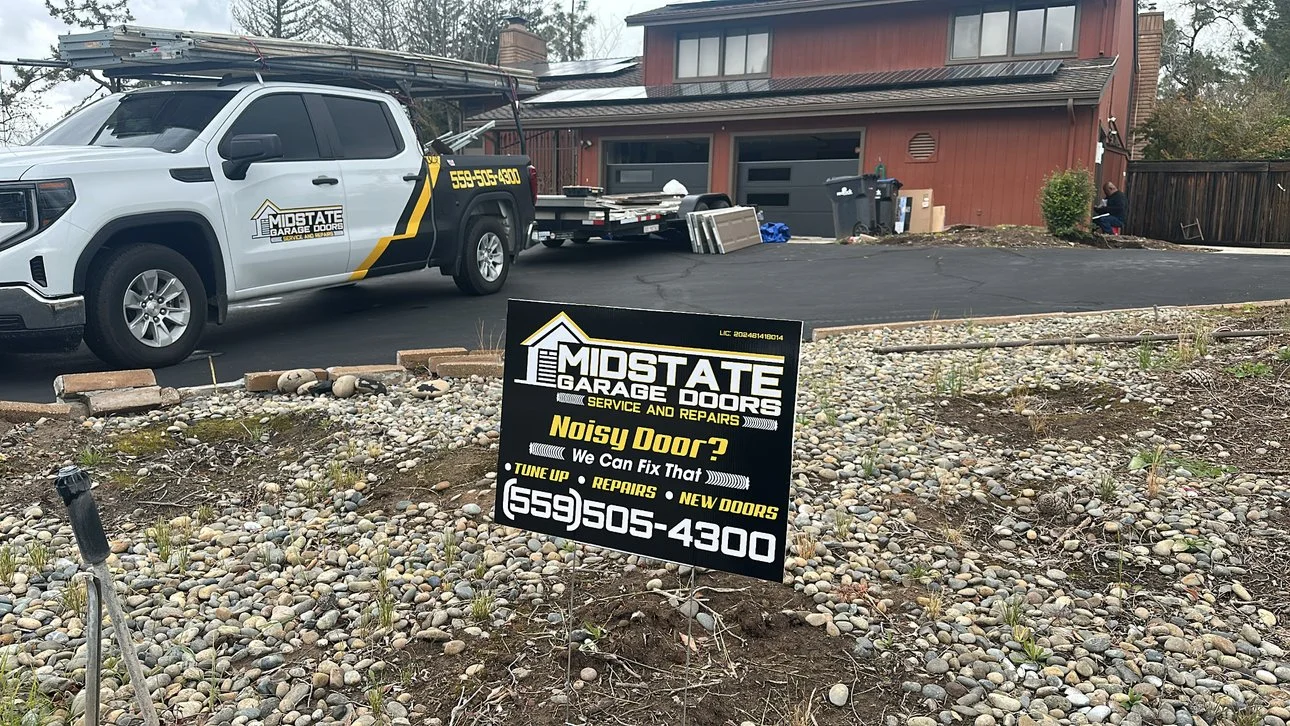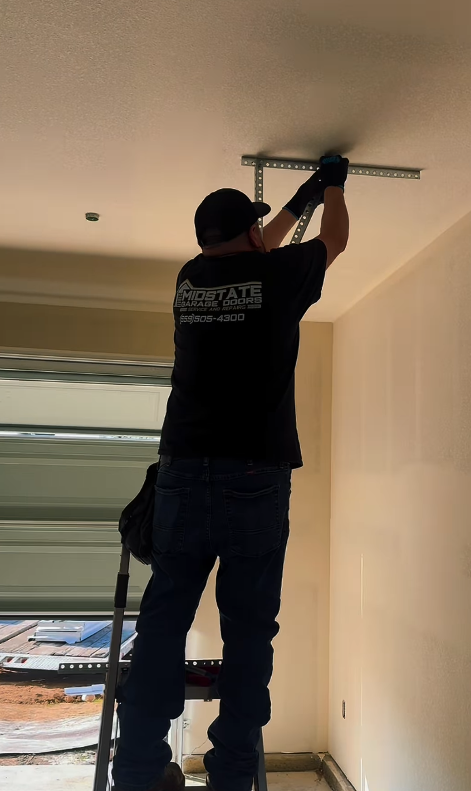Services
Experience reliable garage door installation, fast repairs, and thorough maintenance from Madera’s trusted, local team. Whether you need a brand new garage door, urgent help with a breakdown, or routine service to keep things running smoothly, Midstate Garage Door delivers quality workmanship and friendly expertise you can count on.
Contact Us
Hours
24 Hours a Day! 7 Days a week!
Emergency Hours and Weekends available!
Contact
(559) 505-4300
midstatgaragedoors.nathan@gmail.com
Service Areas:
Madera, CA · Kerman, CA · Merced, CA · Coarsegold, CA · Oakhurst, CA · Fresno, CA · Clovis, CA
What Is Done During a Full Garage Door Installation?
A full garage door installation typically includes:
Removal of the Old Door: Safely taking out and disposing of an existing garage door if necessary.
Preparation: Inspecting the opening, ensuring it’s level, and prepping tracks and hardware.
Installing Panels: Securing each garage door panel one by one, aligning and connecting hinges and rollers as the structure builds upward.
Installing Tracks and Hardware: Mounting vertical and horizontal tracks, brackets, and supports.
Spring & Cable Setup: Installing torsion or extension springs and connecting lifting cables, which is a technical and safety-critical step.
Opener Assembly: Mounting and connecting the garage door opener system (if included).
Balancing and Testing: Adjusting the door for smooth operation, testing for safety and function, and making sure everything operates quietly and reliably.
Cleanup & Final Walkthrough: Cleaning the area and showing the customer how to use and maintain their new door.
What Is Done During Garage Door Services & Repairs
When you call for garage door service or repair, here’s what you can expect:
Comprehensive Inspection: A technician thoroughly examines your garage door system—including panels, springs, cables, rollers, tracks, opener, and safety sensors—to pinpoint the source of the problem.
Diagnostic Testing: Using specialized tools, they test electrical and mechanical components and check for hidden issues, ensuring an accurate repair plan.
Clear Recommendations: After diagnosing the problem, the technician explains the findings, discusses your options, and provides a clear estimate before any work begins.
Expert Repairs: Our team handles everything from spring and cable replacement, opener and sensor fixes, track and roller alignment, to hardware repairs. Safety and long-term reliability are always top priorities.
Part Upgrades (as needed): If components are worn or outdated, we’ll recommend quality upgrades or replacements to improve performance and durability.
Testing & Final Adjustments: After repairs, the door is tested through multiple open/close cycles for smooth operation, safety sensors are checked, and any fine-tuning is performed to guarantee reliable, quiet use.
Helpful Tips: We always demonstrate the finished repair and offer advice to keep your garage door running well between service calls.
What Is Done During Preventative Maintenance
Preventative maintenance keeps your garage door system running smoothly and helps you avoid unexpected breakdowns. Here’s what’s included:
Full System Inspection: An experienced technician examines 20-25 critical points—springs, cables, rollers, tracks, hinges, door panels, opener, and safety sensors—to catch small issues before they become big problems.
Lubrication: All moving parts, such as springs, rollers, hinges, and tracks, are lubricated with the correct product for smooth, quiet operation and reduced wear.
Balance & Alignment Checks: The door’s balance and track alignment are tested and adjusted to ensure safe, even movement and to prevent unnecessary strain.
Hardware Tightening & Adjustments: Loose bolts, brackets, and hardware are tightened, and the tension on springs and openers is checked and corrected as needed.
Safety Sensor Testing: All safety features, including auto-reverse and sensors, are tested and calibrated for reliable protection.
Weatherproofing Checks: The technician inspects seals, weatherstripping, and door surfaces to help protect your garage from the elements.
Performance Report: You receive a summary of the inspection results, along with recommendations or quotes for any necessary repairs discovered during maintenance.
Garage Door Services & Maintenance Timeline
Homes 0–5 years: Maintenance every 12 months, inspection every 2 years, replacement only if damaged.
Homes 5–15 years: Maintenance every 6–12 months, inspection annually, consider replacement after 12 years.
Homes 15+ years: Maintenance every 6 months, inspection every 6–12 months, replacement likely by year 15–20.
Additional Recommendations Based on California’s Central Valley Weather:
Hot, Dry Summers: Lubricate moving parts and inspect weather seals twice a year—heat can dry out rubber and cause contraction/expansion of metal.
Occasional Rain or Cold Winters: Inspect weather stripping before winter and after heavy rains to prevent leaks and rust.
Dust/Wind: Clean and check sensors more often—debris and dust storms can affect operation and safety.
Service Frequency Summary
Preventative Maintenance:
Newer homes: Once a year is sufficient.
Homes 5-15+ years: Every 6–12 months for best performance and to catch age-related wear.
Harsh weather or heavy use: Every 6 months is wise, especially with older garage doors.
Professional Repairs:
Anytime issues arise (door noises, operation problems, opener malfunctions).
After any major weather events or impacts.
Full Replacement:
Most garage doors last 12–20 years; consider replacement at 15+ years or sooner if safety, function, or curb appeal declines.
Regular garage door maintenance saves money by catching problems early, ensuring smooth operation, and extending the life of your investment—especially in Central California’s warm, sometimes dusty climate.





